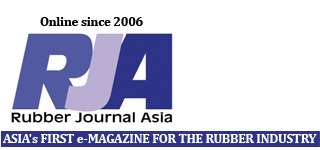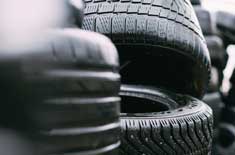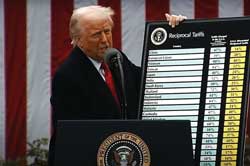The higher than expected trade tariffs imposed by the US may shake up a few industry sectors in Asia, including the tyre sector that will require Asian tyre makers to innovate and become more competitive in the global market, according to Angelica Buan in this report.
Market highs and lows
The global tyre industry is still a solid driver of growth— and the numbers back that up. In 2024, the market was valued at around US$137 billion, and it’s expected to grow at a CAGR of 4.2% from 2025 to 2032, reaching about US$191 billion.
In the global scene, the US tyre market is said to hold a 28% share and is projected to grow at 5.4% during the forecast period, according to Maximize Market Research’s tyres market 2025–2032 forecast.
The five leading exporters of new rubber tyres, namely, China, Thailand, Germany, Japan, and the US, accounted for 46% of global rubber tyre exports in 2023.
Meanwhile, the Asia-Pacific region already accounted for nearly half or 48% of the global tyre market in 2024, and it’s expected to grow at a CAGR of 5.3% from 2025 to 2032.
Asia is home to three of the world’s four largest tyre markets—China, India, and Japan. Together, they made up 70% of the region’s tyre market in 2020, which was estimated at 1.3 billion tyres valued at around US$97.4 billion, based on Smithers’ The Future of Tires in Asia 2025 report.
But over the past three years, the industry in Asia has had its fair share of challenges. These include shortages and unstable prices of raw materials, shipping and logistics issues, rising freight costs, and tighter environmental regulations. Geopolitical tensions have not helped either.
Raw material supply problems and price swings have been especially tough for the sector. Many of the top players have had to deal with serious supply chain disruptions. With raw material costs constantly changing, manufacturers are left with a lot of uncertainty, which can drive up production costs and eventually impact consumer prices, too.
Tyre makers in Southeast Asia are also facing growing pressure from stricter environmental regulations and higher sustainability standards. At the same time, many Asian governments are pouring more money into transport and infrastructure, which is pushing new rules aimed at cutting CO2 emissions and rolling out tyre labelling programmes.
In China, for example, there’s a strong push for low rolling resistance (LRR) tyres, largely because of government efforts to bring down emissions.
US tariffs add on to challenges
In a plot twist just when the industry seemed ready to bounce back it has taken a hit by the imposition of new tariffs that are expected to shake up the global supply chain once again—for better or worse.
US President Donald Trump’s new tariffs, which add on to the sweeping 10% duty on all US imports, will affect the tyre industry in Asia hard, especially major exporters to the US. These “reciprocal” tariffs target countries that the Trump administration says impose high duties on US imports or enforce non-tariff trade barriers.
According to S&P Global Mobility, the US has imposed a 25% tariff on all light-duty vehicles imported into the country, with collections starting in April 2025. For automotive parts, tariffs will kick in no later than May 2025. In 2024, the US imported the most number of vehicles from Mexico, followed by South Korea, Japan, and Canada, according to S&P Global Mobility estimates.
The US administration has implied that tariffs on automotive and automotive parts, including tyres, are to remain in place indefinitely, with high, persistent rates and few exemptions.
The impact isn’t limited to imports. Rising costs will also affect the US automotive manufacturing sector, eventually leading to higher vehicle prices for consumers.
D-day for Asian tyre sector?
Asian countries will be hit hard by these changes, especially since out of the ten biggest exporters of passenger tyres to the US in 2024 – Thailand, Indonesia, Vietnam, South Korea, Japan, Cambodia and Malaysia – will be subject to reciprocal tariffs.
Thailand was the biggest exporter of passenger tyres to the US last year, shipping an estimated 35.3 million units, a yearover-year increase of 16.4%, according to Modern Tire Dealer’s statistics.
Specific countries and reciprocal rates affecting Asia are Thailand (37%), Indonesia (32%), Vietnam (46%), South Korea (26%), Japan (24%), Cambodia (49%) and Malaysia (24%). China, the world’s largest producer and consumer of tyres, will now face a reciprocal tariff rate of 34% in addition to the 20% tariffs already in place.
Looking ahead to 2025, US tyre imports are projected to come primarily from Thailand (US$312 million), Mexico (US$172 million), Canada (US$150 million), Vietnam (US$118 million), and Japan (US$109 million).
Perhaps the silver lining in this tariff turmoil is that, while these measures may increase costs for US consumers and decrease competitiveness for Asian exporters, they could also shift supply chains and alter market dynamics in the tyre sector.
Already, many manufacturers are moving production away from China to other economies in South/Southeast Asia where tariffs are lower.


